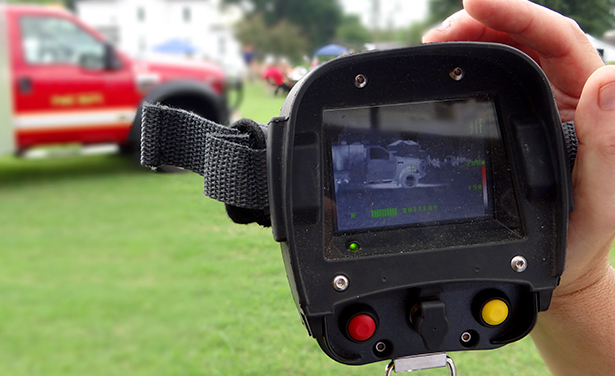Some industries are lucky enough to be glamorous and constantly associated with sleek new technological advances. The recent rock concert-like atmosphere of the iPhone and Apple Watch launch in the United States was an example of the kind of thing we’re talking about.
Unfortunately, the plumbing industry isn’t one that is accustomed to that kind of fanfare or attention. With the brief exception of the invention of the port-a-loo several decades ago, technological advances in the world of pipes and drains aren’t generally headline grabbers.
But we think we’ve unearthed a product that goes some way to changing that, and it has some awesome money saving applications for our customers as well.
Thermal Plumbing
If that heading seems confusing, don’t worry, we thought it was too when we first came across it. But as it turns out, thermal imaging cameras are an incredible technology with a range of applications. The industries that have put them to use are as wide as the electrical and mechanical factories of China, research and development labs at the top universities and building diagnostics in the largest buildings and stadiums around the world.
And of course, plumbing. Thermal cameras work by showing the person using them heat signatures and “cold spots” through solid walls and floors. The technology is a lot like an x-ray, with the ability to see through solid objects into problem areas.
So how does this superman-like technology work?

Back To School
Even for those who didn’t rate science as a subject at school, the technology behind infrared cameras is pretty cool. Infrared light, also known by the fancier term “thermography” measures the heat energy generated by an object. This heat signature is known as thermal energy, and also produces light. Unfortunately, human eyes are not equipped to see this light.
Infrared cameras solve this problem by being calibrated to “see” heat. Everything that is above the temperature of absolute zero produces heat. That includes ice cubes! The higher the objects temperature, the greater the light emitted.
For building and maintenance problems, this is incredible. Most technology that we’ve invented has a common characteristic before it fails. It gets hot. Pinpointing heat spots where plumbers and other contractors know there are pipes and other water infrastructure can show us where there are weak points, leaks and pools of water.
How We Can Use It
Calling in a plumber is traditionally a reactive process. By this, we mean that you generally use a plumber in the same way you use a doctor: you call one when there is a problem that needs attention.
Thermal imaging gives us the ability to take a more preventive approach, to try and identify problems before they become more serious, more damaging and more expensive for you.
Take this example. Showers, bathtubs and spas are present in every single home and apartment complex in Australia. And the pipes for these run through walls, between floors and under the house. When water damage occurs, it’s rarely because of a sudden explosion of pressure resulting in a fountain-like torrent of water. More commonly, water begins to leak slowly through a weak spot, pooling over time and weakening the grout and plaster around the pipe. Given enough time, this will compromise the strength of any building material and cause water damage, mould or even a hole in the wall or ceiling.
With a preventive check from a plumber with a thermal imaging camera, we can identify these pools of water or leaks before they have the chance to cause damage. It’s like being told you’re about to get a cold and being able to prevent it!
It also helps us work better in the event there is a problem, because we can find the source of the problem faster, meaning you can get back to normal more quickly.
If you’re looking for an emergency plumber, especially one with the latest tricks and tools in their kit bag in Northern Sydney and the Northern Beaches, we think we are among the best in the business. So if you have a plumbing problem that needs fixing, or have the suspicion that there’s one developing, give us a call on 0411 774 381, we’ll have things back to normal in no time.

